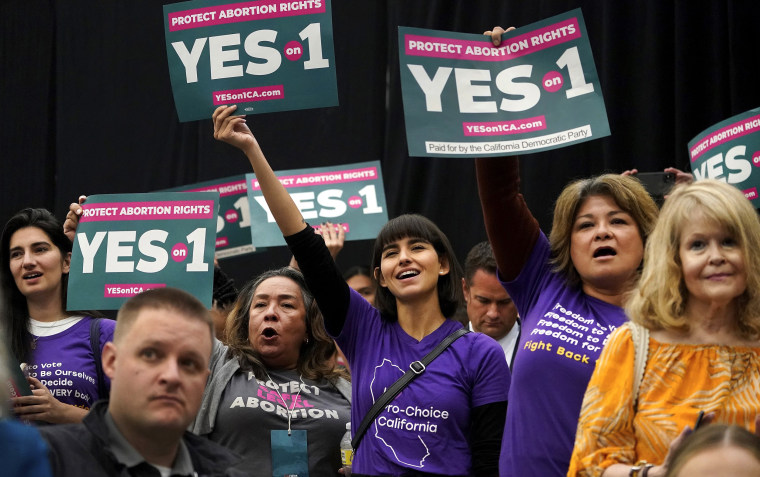Republicans can’t say they weren’t warned.
During this week’s midterm elections, Americans decisively affirmed their support for abortion rights. A slew of notable anti-abortion candidates were defeated (cough, Dr. Oz, cough), and voters chose reproductive rights in five separate state ballot measures.
This meant that Montana’s voters joined Vermonters, Michiganders, Californians and even voters in deep-red Kentucky in protecting abortion rights.
On Thursday, Montana’s “Born Alive” legislative referendum officially failed. The measure would have imposed criminal penalties, including up to $50,000 in fines and up to 20 years in prison, for any individuals who failed to take “medically appropriate and reasonable actions” to save the life of an infant — defined as a legal person who breathes, has a heartbeat or has voluntary muscle movement — who is born prematurely or survived an attempted abortion. (The latter is extremely rare, as fetuses cannot survive outside of the womb before 22 weeks, and infanticide is already a crime.)
This meant that Montana’s voters joined Vermonters, Michiganders, Californians and even voters in deep-red Kentucky in protecting abortion rights. Vermont, Michigan and California enshrined reproductive freedom in their state Constitutions, and in Kentucky, voters struck down a proposed constitutional amendment that would have explicitly stated that there is no right to abortion in the state.
Turns out, people really enjoy having bodily autonomy. And none of this is surprising.
“If you’re the anti-abortion movement and you can’t win a vote like that in Kentucky, the question is, can you win a vote like that anywhere?” Mary Ziegler, a professor at the UC Davis School of Law, told Time magazine’s Charlotte Alter.
It seems unlikely when you look at the numbers.
According to the NBC News Exit Poll, abortion ranked just below inflation in terms of voter importance. In Pennsylvania and Michigan, where Democrats scored major victories, led by women, people of color and young people, exit polls showed that abortion topped inflation as voters' No. 1 issue.
Despite the fact that the religious right has used anti-abortion activism as a cynical way to motivate white, Evangelical voters since the late 1970s, support for legal abortion has remained quite high. According to Pew Research, 61 percent of Americans say that abortion should be legal in all or most cases. Where other political issues engender stark divides based on race, gender, age group and education level, abortion does not. Since 1995, support for legal abortion in all or most cases has only dropped below 50% once. Over the last year, support has only risen, punctuated by the Supreme Court’s June decision to reverse Roe v. Wade, the seminal 1973 decision that legalized abortion nationally.
The court’s decision highlighted just how high the stakes are on a state level for pregnant people and their health care providers. Although Republicans tried to reframe abortion rights as a question of morality, the reality is that access to such care is first and foremost a public health issue. When abortion is restricted — which has been happening for decades in red states — dire health consequences follow. When abortion access is expanded, the opposite occurs. In 1971, one year after abortion was decriminalized in New York, the maternal mortality rate in the state dropped by 45%.
(It is also, as evidenced by the actions of voters in conservative states like Kentucky, a personal freedom issue. The GOP champions autonomy on issues like assault weapons, and yet asked voters to take away abortion rights that have existed for decades. The ethical dissonance there is jarring.)
The numbers make it crystal clear: When people who can get pregnant do not have access to abortion care, their lives are in danger. And this is something that voters of all demographic groups understand.
The bogeyman of abortion is far more effective when a national abortion ban feels like an amorphous goal.
As Kimberly Inez McGuire, the executive director of the youth-driven reproductive justice organization URGE, put it in a statement Wednesday: “Our bodies and our futures are at stake. We will continue to make our voices heard — and we’ll continue to vote — until reproductive justice is a reality.”
Fomenting extreme anti-abortion sentiment was a cynical calculus that has worked for the far-right for decades. But the bogeyman of abortion is far more effective when a national abortion ban feels like an amorphous goal, rather than a terrifyingly close reality.
When voters directly get a say in their own individual reproductive rights, it turns out most want to keep them.

